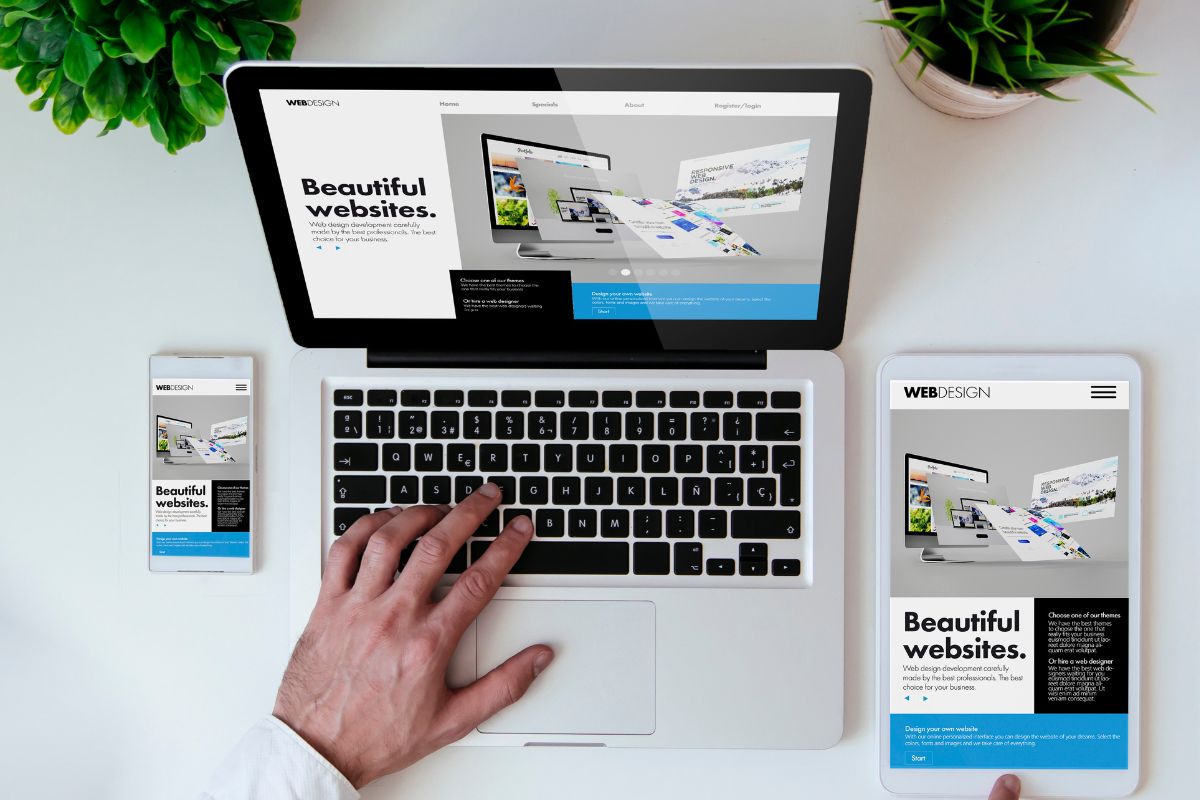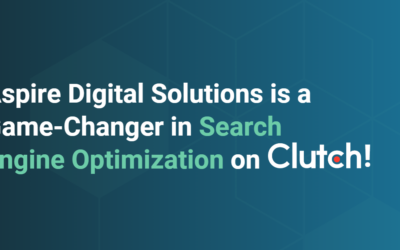Welcome to this exciting guide on the essential steps for building a professional website. We understand that many people feel intimidated by creating their websites. With this in-depth guide—which promises to be rewarding and pain-free—you will learn the basics of website design and acquire the necessary skills to effectively and efficiently create a professional website.
If you feel that brushing up on your website design skills would be useful, read on to find out how to create your professional website in 5 simple steps. As somebody new to web design, you can trust that by the time you finish reading this guide, you will have all the know-how and confidence to go out and design the most stunning and impressive website.
Quick Explanation of Key Points
Web design uses various techniques and tools, including HTML, CSS, and JavaScript. Many online tutorials and guides provide step-by-step instructions on creating a website.
Reasons Why You Should Create A Website
Having a website is essential for businesses today. It serves as your brand’s digital home and allows you to engage with your customers online. There are plenty of reasons why you should create a website, but here are the most important ones:
The first reason is visibility. A website, like one created by Aspire Digital Solutions, allows you to be seen by people from all around the world. With the right design and content, you can reach more people than ever. Secondly, a website can provide valuable information about your business that potential customers wouldn’t otherwise know about. You can include details about your services, contact information and even display customer reviews.
Beyond these two main benefits, there’s also the potential to increase sales and conversions. People visiting your website may contact you or buy your products or services. Additionally, a well-designed website increases credibility and trust among potential customers. This can help build long-term relationships with them and even expand your customer base over time.
Creating a website may be challenging, but it is worth it if done correctly. There’s no better way for businesses to grow their web presence than to develop a professional website with an effective design. Let’s evaluate what makes for good web design so your site shines above the rest!
Elements of a Good Website Design
A well-designed website is essential to reach and engage your target audience effectively. A good website design should intelligently convey the message of your website and make it easy for visitors to take action. It’s important that, no matter how flashy a website looks, it also meets all elements of a good website design. These include straightforward navigation, effective organization of content, engaging visual elements, web accessibility compliance, and a solid mobile presence.
Navigation is an important part of web design and should be straightforward so visitors know exactly where they need to go on the page or where they come from. It needs to showcase all relevant pages and subsections in an organized way. Similarly, an effective content organization can make it easier for visitors to find what they want when visiting a site quickly. This can be done using simplified text layouts and organized divisions within the website.
In addition to content layout, captivating visuals such as graphics, videos, or images can help convey messages more effectively. Professional visuals can draw attention to essential website sections and add to their aesthetic. Web accessibility compliance is another vital element of good website design that ensures visually impaired people can access the site easily via assistive technologies such as screen readers. Furthermore, with increasing numbers of users accessing sites on mobile devices, having an optimized version of the same content that works seamlessly across different platforms is critical for giving visitors access from any device and browser.
When creating a website, Aspire Digital Solutions knows it is essential to consider all these aspects to ensure a successful user experience. User experience (UX) has become increasingly important in recent years as companies try to create websites satisfying their visitors. The following section will dive into these best practices in more detail to get an idea of how you can create a successful UX for your visitors – one that keeps them engaged and coming back for more.
User Experience
User Experience (UX) is a critical element of web design, as it determines how users react and interact with your site. It involves everything from layout and navigation to customizing the website interface for accessibility or different devices. UX can make all the difference between a successful website and one that fails to reach its target audience.
The user experience debate centers on prioritizing visual impact or efficient navigation. On one hand, visual impact matters because it can be the first thing that grabs the attention of a potential user, which could be enough to keep them on your website long enough to explore the content further. On the other hand, efficient navigation ensures the user can find what they need quickly and efficiently so they don’t become frustrated and leave. Both elements are necessary for an effective website but should be prioritized differently based on the type of website and its purpose.
For example, if you have an e-commerce site, it is important to ensure everything functions efficiently, As Aspire Digital Solutions would do, so customers can navigate through and check out quickly without becoming frustrated or confused by any issue with the navigation. However, you must also ensure your visuals are attractive enough to attract customers and entice them to explore more of your products before eventually buying.
The goal should always be to balance visual design and efficient navigation to ensure users have a good experience when using your website. To achieve this, consider different user journeys throughout your site while also making sure your visuals are aesthetically appealing and easy to understand.
Keeping user experience in mind during website development will improve overall customer satisfaction and brand loyalty. By combining powerful visuals with smooth interactions – customers will be drawn back time after time, giving greater weight to each visit. From here, we must now focus on creating a functional website that performs its intended tasks effectively – but that’s another discussion entirely!
Functionality
As discussed in the previous section on user experience, the functionality of your website is just as necessary. A website needs to function properly for your visitors. Make sure that all essential functions are enabled so visitors can easily navigate your website. For example, search bars allow visitors to quickly find the information or product they’re looking for on your website.
You must also address the underlying back-end technology of your website. A functional and reliable web server that can handle requests is essential for a successful website. There are different technologies available, and the choice of which one to use depends on the type of website you have. Secure technologies such as SSL must also be implemented if your website offers transactions. Furthermore, if you need specific applications for certain tasks or services, those should also be considered when developing your website’s functionality.
An argument could be made for having more or fewer functions on a website; each approach has pros and cons. Adding too many functions might look good on paper but slow down user experience due to increased loading times for such complicated pages. On the other hand, having too few functions could hinder a user’s ability to retrieve the information or services they are looking for. Ultimately, it is up to you as the designer to determine what combination works best for those visiting your site and what they will view/use it for.
Functionality plays an essential role in providing an enjoyable user experience and ensuring that all elements of your webpage work flawlessly together. With this understanding, it is time to look deeper into how we design our websites – diving more into interface styling and security implementation – so visitors can quickly and confidently access our content.
Interface and Security
After addressing the essential functionality of your website, it’s time to focus on the interface and security of your platform. The interface should be attractive and intuitive, prompting visitors to explore further. If customers need help understanding where they are or why they should care about something within the first ten seconds, you likely won’t keep them on your page. Tools like search bars or featured content can simplify navigation and help customers find what they need faster.
Security, as emphasized by Aspire Digital Solutions, is just as important as user experience in website design. Assuring users that their data is safe allows them to build trust with your brand and come back for their future needs. When it comes to safety for e-commerce sites, investing in an SSL certificate and other malicious software scans can help ensure customers’ private information is secure while doing business with you.
Although interface and security should be prioritized in website design, one must stay within the other. Both aspects must work together for your site to succeed, as both can influence the likelihood of returning customers. Striking the right balance takes some practice, but the ultimate goal is creating an enjoyable experience that leads to conversions.
Now that your website has successfully surpassed functionality and aesthetic requirements, it is time to begin optimizing for promotion. Refreshing regularly updated content, creating social media accounts, and utilizing SEO strategies allow potential customers to find you more easily by connecting with popular trends or topics searched more frequently. This will enable you to continue growing and nurturing relationships with current customers while expanding your market reach further.
Main Takeaways
Successful website design requires striking a balance between interface and security for customers to have an enjoyable experience. Investing in tools like SSL certificates and malicious software scans is essential to secure customer data. Optimizing your website for promotion through updated content, social media accounts, and SEO strategies will help expand market reach.
Optimizing Your Website for Promotion
Now that you have an interface and security protocol that is both aesthetically pleasing and reliable, it is time to look into optimizing your website for promotion. Aspire Digital Solutions understands that online advertisement and SEO (Search Engine Optimization) are two tools that can significantly increase the visibility of your website. Depending on the nature of your business, you may choose one over the other. There are benefits and drawbacks to both.
Advertising works best when you have a budget. Pay-per-click or pay-per-impression campaigns can be particularly effective. But advertising isn’t without risks; if you don’t monitor your campaigns carefully, you can quickly deplete your budget with very little return on investment. Your initial investment could also be costly; ad rates can vary significantly depending on your industry.
SEO requires more effort to get up and running but has lower overhead costs and higher long-term returns. It involves making sure your content remains relevant and updating the technicalities associated with the coding of your website so that search engine algorithms can better prioritize results when indexing searches. You don’t necessarily need a budgetary commitment to engage in SEO; however, there is no guarantee for success because of how competitive the online world is nowadays.
In conclusion, optimization should always be a priority when creating a website; finding what methods work best for you will require some research and experimentation. Not all approaches may yield positive results, but that means trying something new until you find something that works!
The next step towards creating a professional website is understanding the resources available to you in setting up an effective hosting experience. This ranges from understanding what hosting environment to choose and configuring the server options associated with maintaining good uptime.
Setting Up the Right Resources
Now that your website is optimized for promotion, it’s time to set up the right resources so people can use them. Your web hosting and domain provider should give you access to a number of organized tools that you can use to build and configure your website, including content management systems (CMS) like WordPress or Joomla, as well as many other plugins and tools. Furthermore, some providers may even offer their design services so you can come away with a professional look without doing all the work yourself.
Having the right team and resources, as emphasized by Aspire Digital Solutions, is key to the success of any website. It allows you to create a customized look and feel based on your brand identity while keeping content organized and easily accessible. You’ll want to ensure that whatever platform or CMS you choose offers enough flexibility to grow with your website; choose something too stiff now, and you might need help changing it. However, something too complicated could be challenging to master initially.
It’s always best to research a bit about each platform before making any decisions; explore tutorials, read user reviews, and gauge how suitable it is for your purpose before hiring someone or doing it yourself. Ultimately, finding the right resources for building your website will save time and money in the long run.
Once you have the right resources, you can personalize your website experience and design it according to your user’s needs. This means a few more things to consider: what type of visitor will use your site? How comfortable are they with technology? What kind of user interface would they prefer? Thinking about these questions now and implementing them accordingly is crucial in optimizing the web experience for everyone who visits.
Personalizing the Website to Intuit the Visitor’s Needs
Although the resources have been established and a website design has been implemented, an important step still helps make a professional website: personalizing the website to intuit the visitor’s needs. Visitors need to feel welcome and personally cared for when visiting a website, easily achieved through straightforward additions like tailored banners or personal messages. Based on their browsing history, page visits, and demographics (age, gender, etc.), developers can present relevant content and ads that turn visitors into customers.
For those unsure where to start personalizing their website experience, consider using third-party applications for gathering data, such as Geolocation services or Machine learning algorithms. These services will help track user behavior and suggest targeted content that will entice them to stay longer and purchase goods or services. Moreover, depending on the app they use, some websites offer similar items below the ones they have already browsed and encourage purchases. This type of customization provides a more meaningful web experience for the potential customer that, in return, leads to better loyalty rates and higher conversion rates from visitors to customers.
By accurately personalizing your website, you can set your business apart from competitors by developing an impression of being attentive to your customers’ needs. This effortless touch of care could win over future customers who would appreciate feeling looked after in this digital world.
Having touched upon setting up the right resources and personalizing your website to intuit customer needs, it is essential to address how these resources must be sustained by maintaining and updating your website regularly.
Maintaining and Updating Your Website
Once a website has been personalized to meet a visitor’s needs, maintaining and updating it is essential. Keeping content fresh, ensuring the design works with current technology, and providing security are all important to consistently keeping a website up-to-date. Without regular maintenance, visitors may be startled by sudden changes or bugs that cause frustration. Here are some tips for efficient maintenance to ensure a website remains dynamic and enhances user experience.
Maintaining Content: Updating content can significantly improve the quality of your website and keep visitors engaged. Regularly post new blog entries and update product information to show users that the site is active and relevant. It is also essential to proofread text for accuracy and eliminate outdated information.
Testing Design Compatibility: Design compatibility testing ensures websites run correctly on all common browsers and devices regardless of their screen size. This testing should be done frequently so any potential issues can be quickly addressed before they cause problems with visitors’ experiences.
Ensuring Security: Security is an increasingly important factor when designing websites, especially considering current threats like malware and ransomware attacks which can put the company at risk of severe losses due to sensitive data breaches. To protect against these threats, invest in protocols such as web application firewalls or secure socket layers (SSL) encryption to ensure sensitive visitor data is always safe on your website.
Overall, prominent website design companies like Aspire Digital Solutions recognizes that regular maintenance and updates are essential to ensure that your website operates efficiently while providing optimal user experience to its visitors. By sticking to a consistent update schedule and implementing security measures, companies can maximize their website’s potential and remain competitive.
Common Questions and Explanations
What elements should be included on a website for optimal user experience?
An optimal user experience on a website requires a combination of effective elements. To create a professional website, some essential elements that should be included are:
1. An easy-to-navigate layout: A clear navigation path on the site is important, allowing users to quickly and easily find what they’re looking for. Use prominent tabs and sections so your visitors know where to look for different pages on the site.
2. Responsive design: Make sure your site looks great on any device or screen size by ensuring it has been designed responsively. This includes automatic image resizing and shrinking elements based on browser window sizes.
3. Quality images: Using high-quality photos can make all the difference when creating a professional website; they set the tone and overall feeling of the site. Also, be consistent with the style and color palette you use throughout your website not to disrupt the design flow.
4. Engaging content: Keep your content interesting and engaging by writing in short paragraphs and including bullet points for summaries and lists. Readers will appreciate well-structured, concise content rather than long blocks of text, which might distract them from reading further.
5. Clear contact information: Having a dedicated contact page or form with all the necessary information (such as an address, telephone numbers, email addresses, etc.) makes it easier for your customers to get in touch with you if they have questions or concerns about your product/service offering.
What are some common mistakes to avoid when designing a website?
When designing a website, it is important to keep a few key points in mind to create a professional-looking website. Below are some common mistakes to avoid when designing a website:
1. Poor Readability: Use fewer fonts, text sizes, and colors. Having too many different elements can be distracting and make the page look cluttered. Stick to two or three fonts and keep the design simple.
2. Unresponsive Design: Ensure your website looks good and is easy to navigate across various devices (desktop/laptop computer, tablet, smartphone). A responsive design could save you visitors who would leave your site due to the difficulty viewing the content on their devices.
3. Heavy Graphics: Many people associate heavy graphics with a professional-looking website, but too much can slow down the loading time of your page, which may cause visitors to leave if they want to load immediately. Instead, stick with clean designs with simple graphics or visuals that help highlight essential elements of your website’s content.
4. Poor Navigation: Remove unnecessary distractions and keep navigation simple. Use clear labels for menus and links and avoid confusing page structures where possible. Also, ensure that pages load quickly, as navigating through multiple pages may become tedious if it takes too long for each page to load.
5. Ignoring SEO Practices: Search engine optimization (SEO) is crucial for gaining online visibility. Use relevant keywords throughout your copy and appropriate Heading Tags (H1, H2, etc.) for titles and sub-headings, which will help users find your website easily via search engine results pages (SERPs).
Remember to keep your design simple and focus on creating an enjoyable user experience while avoiding these common mistakes when designing your website!
What design principles should I follow when creating a website?
When creating a website, the design principles you should follow are:
1. Keep It Simple and Intuitive: Aspire Digital Solutions understands that a website should be straightforward to understand so the user can easily navigate it. This means eliminating unnecessary elements, sticking to primary colors and layouts, avoiding complicated features, and ensuring a logical and straightforward navigation structure.
2. Establish Consistency Across Pages: As users browse through multiple pages on your website, they should easily recognize the same page elements, styles, and working mechanics across those pages. Maintaining a consistent style among all the pages of your website will help users navigate efficiently and build trust in your brand.
3. Make It Responsive: Responsive web designs are leaps ahead in terms of user experience since it allows people to access your website from different types of devices of various sizes without losing functionality or the overall design.
4. Prioritize Speed and Load Time: Nothing frustrates visitors more than a slow-loading page, as it can lead to them leaving the website before engaging with its content. Optimizing your website for speed should be a priority; techniques such as compressing images, minifying code, caching data, etc., can dramatically reduce loading time.
5. Use High-Quality Visuals: Quality visuals will help you stand out from the crowd and capture user attention; however, use them sparingly to ensure that large files don’t affect loading time or make pages look cluttered. Opt for vector graphics over raster images for smoother performance on different scales where possible.








0 Comments